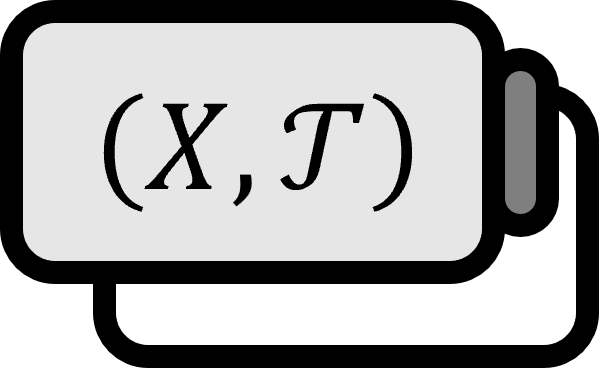Completely Bounded Space
Definition 1
Given a metric space $(X,d)$ and $\varepsilon>0$,
- A finite set $A_{\varepsilon} \subset X$ that satisfies $B_{d}(x,\varepsilon) \cap A_{\varepsilon} \ne \emptyset$ for all $x \in X$ is called a $\varepsilon$-net for $X$.
- If for all $\varepsilon > 0$, there exists a $\varepsilon$-net $A_{\varepsilon}$ for $X$, then $X$ is said to be Totally Bounded.
Explanation
Totally bounded spaces are often also called precompact spaces.
$\varepsilon$-Net
Calling $A_{\varepsilon}$ a net is quite intuitive when considering the condition $B_{d}(x,\varepsilon) \cap A_{\varepsilon} \ne \emptyset$. If you translate the formula into words, it means, for the given space $X$, any point you pick is caught in $A_{\varepsilon}$. If every point is caught within the allowed error $\varepsilon$, it makes sense to call this a net.
Totally Bounded
Considering only a finite cover for all $\varepsilon>0$ means that $X$ can be covered, which implies that $X$ is truly small and manageable. That a space is totally bounded means it can be thought of in finite segments while being a metric space, making each segment easy to imagine.
If you feel a sense of déjà vu with the condition $B_{d}(x,\varepsilon) \cap A_{\varepsilon} \ne \emptyset$ that makes $A_{\varepsilon}$ a $\varepsilon$-net, it’s fine to think of yourself as quite familiar with topology. This condition almost mirrors the criterion for determining whether a space is separable. Indeed, the conceptual difference between density and this lies in whether it’s finite or infinite. It’s harder to satisfy conditions for a finite set than an infinite set, and the subsequent theorem naturally holds true.
Theorem
- [1]: Totally bounded spaces are separable.
- [2]: For metric spaces, being compact is equivalent to being complete and totally bounded.
Proof
[1]
Finite sets are countable, which is trivial from the definition of separable spaces.
■
[2]
Deduced by detouring through sequential compactness.
■
Munkres. (2000). Topology(2nd Edition): p275. ↩︎
